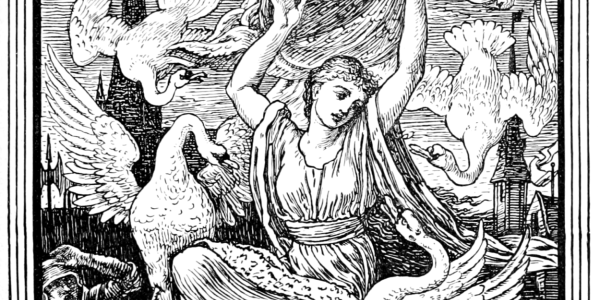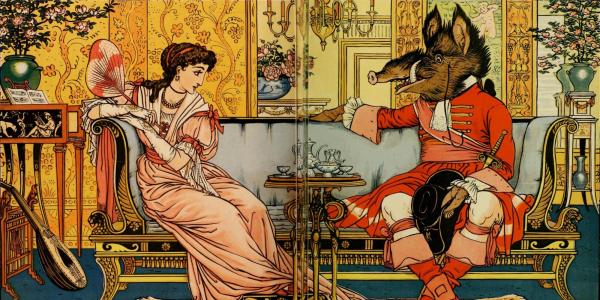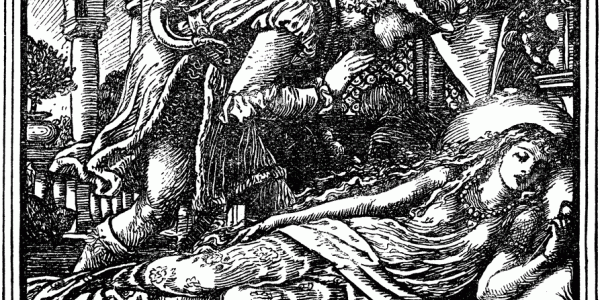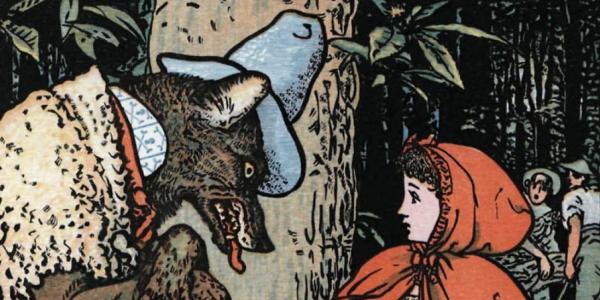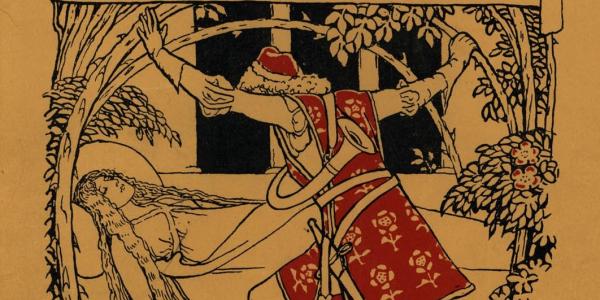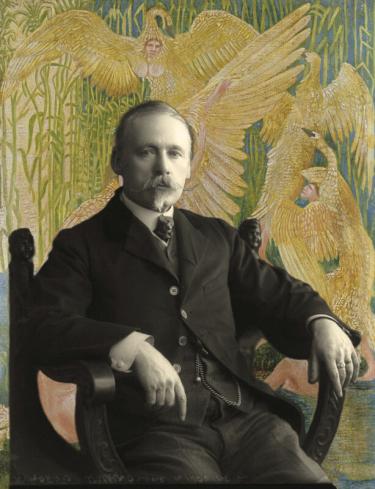
Walter Crane (1845-1915) was a well-known and influential English illustrator and painter remembered for his imaginative contributions to children's books and fairy tales. Crane was responsible for furthering and developing common pictorial motifs which would continue in later illustrations, such as the children-in-the-garden motif. Surrounded by the arts, Crane was the son of a miniaturist (his father) and the brother of an illustrator (brother) and noted writer (sister). He studied closely with artist and critic John Ruskin, and had the opportunity as a wood-graving apprentice to William James Linton to come into close contact with art from the Pre-Raphaelite Brotherhood, such as works from Dante Gabriel Rossetti, John Everett Millais, and Sir John Tenniel. Alongside the influence of the Pre-Raphaelites, Crane was interested in Japanese prints, Classical Greek marble, the Italian Renaissance, and the Socialist movement. Crane offered illustrative contributions to the International Socialist movement under the influence of fellow artist William Morris and was involved in related controversy. The didactic and moral undertones of his work can be found in his portrayal of strong political convictions. In 1864, Crane began to illustrate children's material, which he is most well-known for. Edmund Spencer's The Faerie Queene and The Shepheardes Calendar are among his most notable illustrated works. Crane is remembered for his imaginative, moral illustrations, which feature bold lines and decorative elements.

